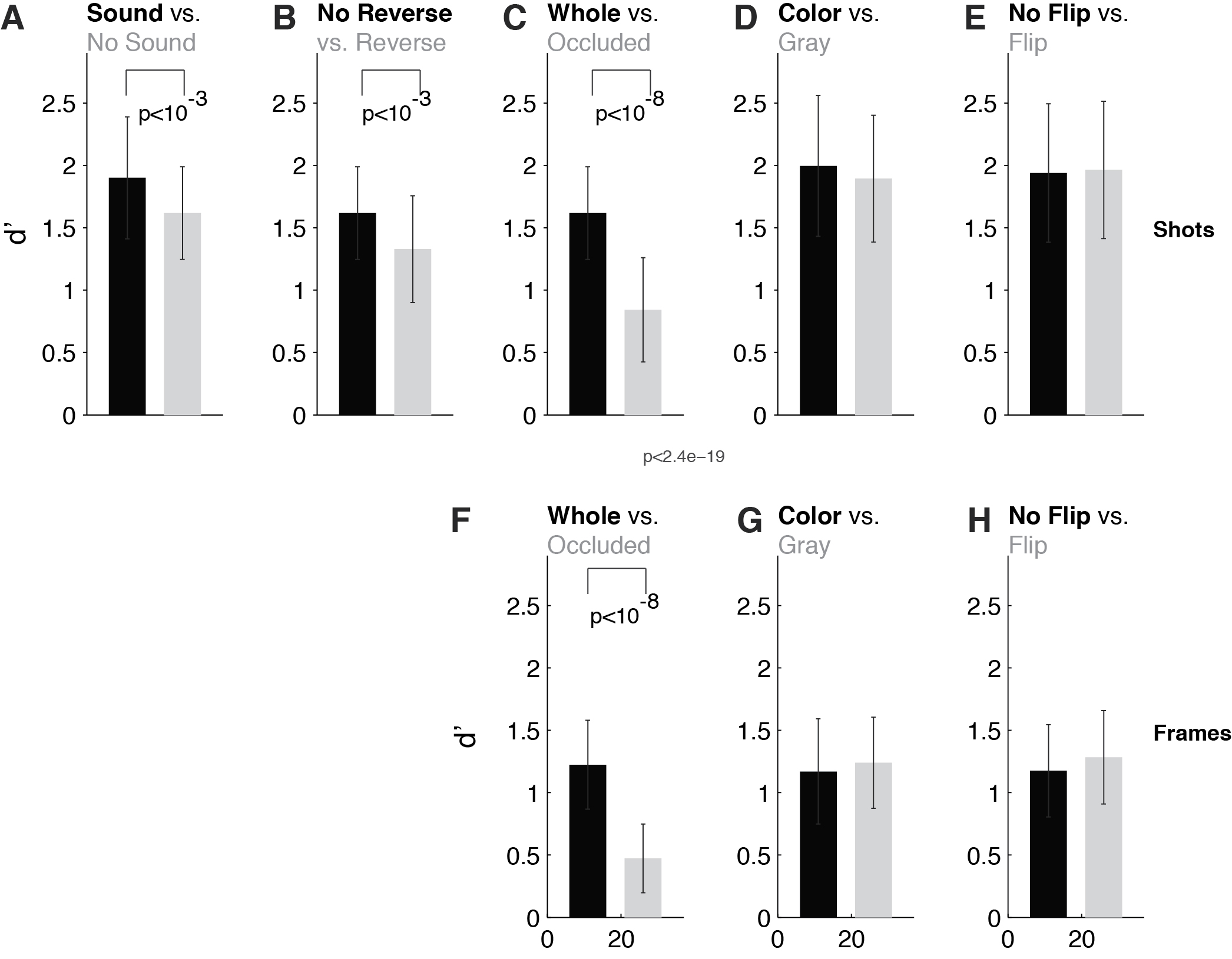Figure W6 (expanding on Figure 3 in the main text): Performance is insensitive to low-level stimulus manipulations and sensitive to disruption of the spatiotemporal events (Variant 4). Here we show d' whereas in the main text we reported the overall proportion correct. A. Performance was higher for shots including sounds (black) versus shots where sound was removed (gray). Here and in subsequent plots, the p value shows the results of a non-parametric permutation test (Methods). B. Reversing the temporal order of the frames in a shot (gray) led to decreased performance (here shots did not include sounds). C. Occluding 75% of the frames in a shot (gray) led to decreased performance (here shots do not include sounds). D. Horizontally flipping the frames in a shot (gray) did not change performance. E. Removing color from the frames in a shot (gray) did not change performance. F-H. Same as C-E but considering only single frames.



